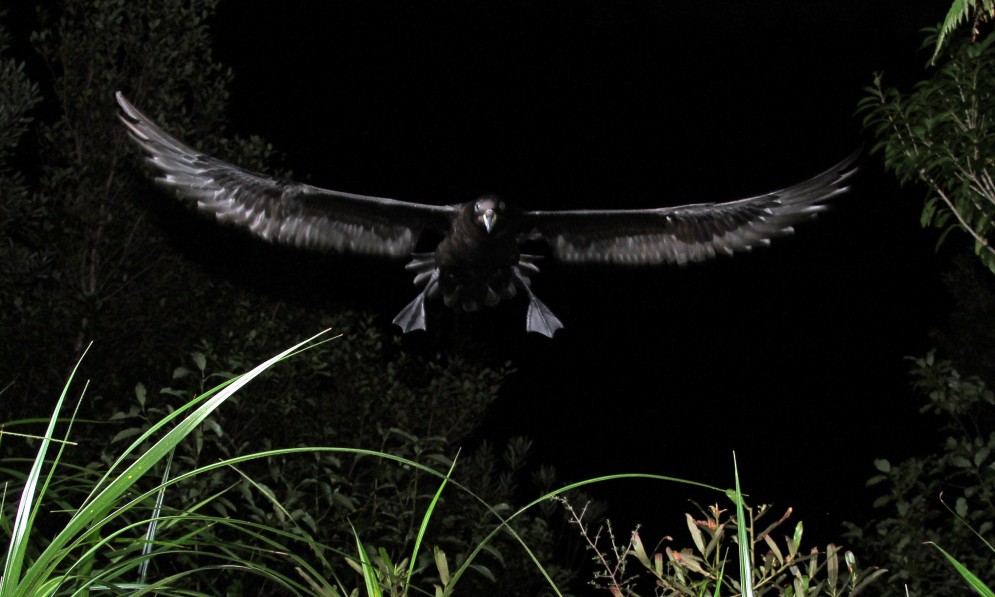Forest & Bird is concerned about the risk to endemic Westland petrels from a proposed industrial-scale mining operation south of Punakaiki. By Suzanne Hills, chair of Forest & Bird’s West Coast Branch.
Forest & Bird magazine
A version of this story was first published in the Spring 2023 issue of Forest & Bird magazine.
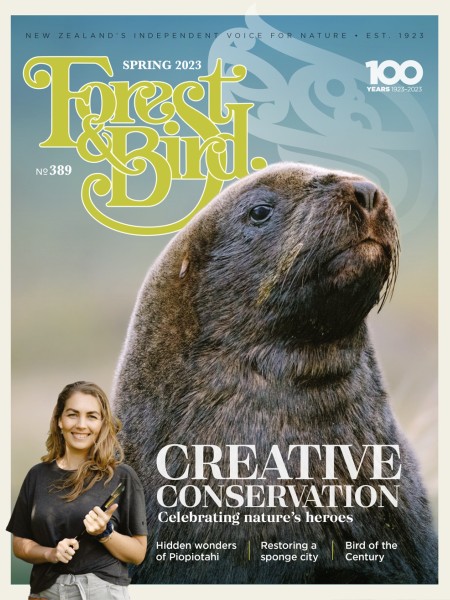
In the forested Paparoa foothills lies a remnant of a once extensive ecosystem – a healthy seabird forest. As the sole breeding ground of the Westland petrel, it is the last of its raucous kind on mainland Aotearoa.
The birds breed along a 4km stretch of coastline within a total area of 8km2. The colony is of particular significance to Forest & Bird as part of it includes our Dick Jackson Memorial Reserve.
The Westland petrel is a quirky winter breeder and nocturnal while ashore, arriving back to their breeding colonies after dusk and leaving again before dawn – innate behaviour to avoid the risk of being taken by aerial predators, such as karearea.
Light distraction from street, vehicle, and building lights is a well-known risk for nocturnal seabirds including the Westland petrel. The fledglings are particularly vulnerable as they embark on their maiden flight, navigating for the first time from their forest world to their oceanic one.
Recognising the risk, the streetlights in Punakaiki are turned off during November and December to protect the fledgling birds from light distraction.
Vehicle headlights, particularly those of modern vehicles with bright LEDs, present a hazard as the fledglings fly over State Highway 6 to reach the Tasman Sea. Luckily, current traffic volumes at night are low.
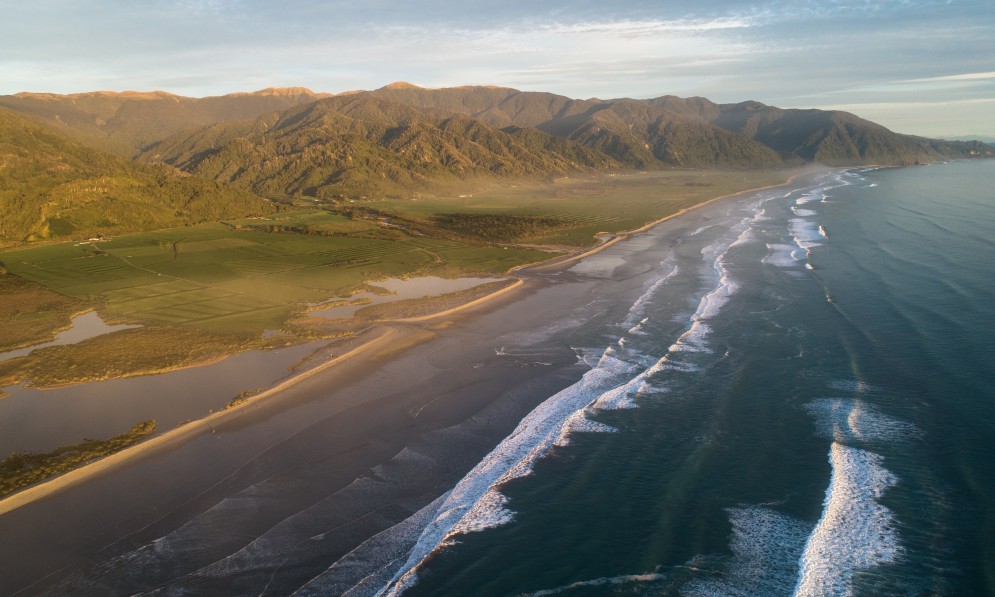
The proposed mining site, centre left, at Barrytown Flats. Image Neil Silverwood
But a proposal by mining company TiGa Minerals and Metals for a huge mineral sand mining operation at Barrytown Flats, 3.5km south of the Westland petrel breeding colony, would change this situation, putting the birds at additional risk.
The largely Australian-owned company has applied to West Coast councils for new resource consents for an open-cast mine, including processing, loading out, and trucking heavy mineral concentrate to the ports of Westport and Greymouth.
The proposed new industry, which could be operating for up to 50 years, would see industrial-style mining for ilmenite, garnet, zircon, and gold along the SH6 Coastal Road, a popular tourist route.
Earlier this year, Forest & Bird ran a webinar raising awareness of the proposed mining operation’s threats to Westland petrels. Once the resource consents are publicly notified, we will be making a submission against it.
Forest & Bird’s West Coast regional manager Nicky Snoyink said: “AsTiGa hold or have applied for mineral mining permits covering the majority of the Barrytown Flats, this first resource consent is critical.
“If consented, it could open the floodgates to the company’s long-term plan of numerous mines operating over the next half of the century. The Coastal Road would become heavily industrialised.”
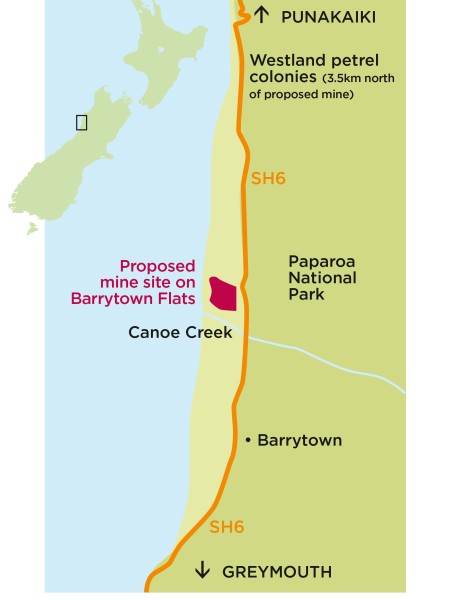
The proposal involves 50 heavy truck and trailer movements and 140 light vehicle movements every day. The vehicle headlights would pose significant light distraction risk for the petrels, as would the lights on the mine site and buildings.
Light disorientation often results in fledglings crash landing (known as fallout) on the road, where they stay as they cannot take off again without a raised launch pad. If they are not found by an observant human and relaunched from nearby cliffs, they will succumb to exhaustion, predation, or being hit by a vehicle.
Members of the local community, including Forest & Bird’s West Coast Branch, are determined to stop this ill-conceived scheme and have formed the Coast Road Resilience Group to campaign against it.
The Barrytown Mineral Sanding Mining application for resource consents has been publicly notified and is open for submissions until Friday 13 October.
If you would like to be kept informed and receive guidance points on how to make a submission against the mine, contact info@coastroadresidents.nz. You might also be interested in viewing our Centennial Speakers Series presentation about this threat to the Westland petrel.

Westland petrel with egg on nest. Image Reuben Lane
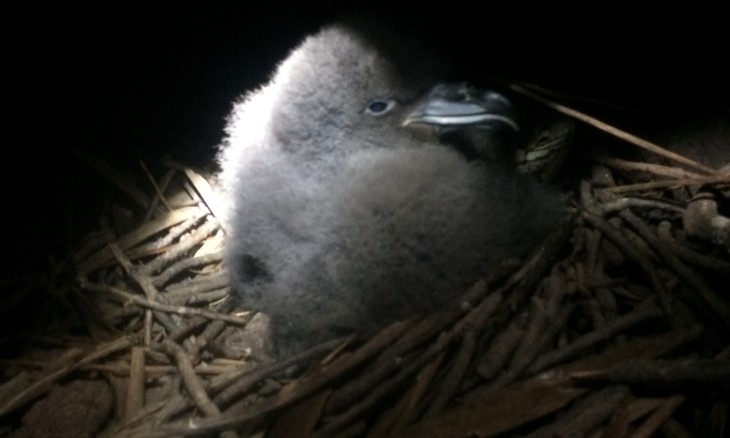
Westland petrel chick in burrow. Image West Coast Penguin Trust
Tāiko Tales
The species currently balances on a knife edge, with an estimated 4000 breeding pairs. With multiple serious threats on land and at sea, the population is highly vulnerable. As habitual ship followers, tāiko are among the top 10 seabird species most likely to die as unintended bycatch from New Zealand commercial fisheries.
Migration to South American waters poses further (but largely unknown) threats from longline and trawl fisheries. Climate change may also have major impacts by changing the abundance and distribution of their food sources at sea while increasing cyclonic events on land. In 2014, Cyclone Ita flattened large areas of forest cover in Barrytown’s Westland petrel colony, and slips are thought to have destroyed hundreds of burrows just as the breeding season was about to begin.
Westland petrel. Image West Coast Penguin Trust

